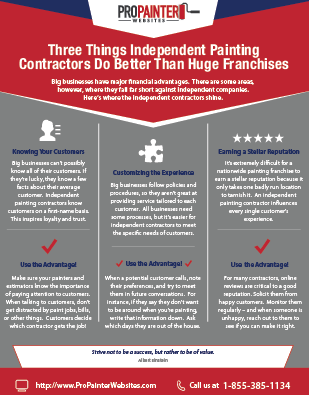What Influence Do The Right Shades Have On Your Brand Name'S Charm In Business External Paint? Discover The Essential Elements That Guide Your Shade Choices
What Influence Do The Right Shades Have On Your Brand Name'S Charm In Business External Paint? Discover The Essential Elements That Guide Your Shade Choices
Blog Article
Material By-Yu Helbo
When it pertains to commercial outside paint, the colors you select can make or break your brand's appeal. Recognizing just how various shades influence perception is vital to bring in customers and building trust fund. But it's not practically personal preference; regional fads and regulations play a considerable duty too. So, just how do you locate the excellent equilibrium between your vision and what resonates with the neighborhood? Allow's check out the vital elements that direct your color selections.
Recognizing Shade Psychology and Its Effect On Business
When you choose colors for your business's outside, recognizing shade psychology can significantly influence just how possible consumers regard your brand name.
Shades evoke emotions and established the tone for your organization. As an example, blue usually conveys trust and professionalism and trust, making it perfect for financial institutions. Red can produce a feeling of necessity, perfect for dining establishments and inventory-clearance sale.
At the same time, eco-friendly symbolizes growth and sustainability, attracting eco-conscious consumers. Yellow grabs focus and stimulates optimism, however too much can overwhelm.
Consider your target audience and the message you want to send out. By picking the appropriate colors, you not only enhance your aesthetic charm however likewise straighten your image with your brand name values, eventually driving client involvement and loyalty.
Analyzing Local Trends and Regulations
How can you ensure your external paint choices resonate with the community? Start by looking into regional fads. Check out close-by services and observe their color pattern.
Bear in mind of what's prominent and what feels out of location. https://www.domain.com.au/living/nine-expert-tips-to-make-your-diy-painting-project-succeed-20180426-h0zako/ 'll assist you straighten your selections with neighborhood aesthetics.
Next, check local guidelines. Several communities have standards on exterior colors, specifically in historical areas. You do not intend to hang out and money on a palette that isn't compliant.
Involve with neighborhood entrepreneur or community teams to collect understandings. They can supply useful feedback on what shades are favored.
Tips for Balancing With the Surrounding Environment
To develop a natural appearance that mixes perfectly with your environments, think about the native environment and building designs nearby. Beginning by observing Click On this page of neighboring buildings and landscapes. Natural tones like environment-friendlies, browns, and soft grays usually function well in all-natural setups.
If your residential or commercial property is near vibrant city areas, you might pick bolder shades that reflect the neighborhood power.
Next, think about the building design of your structure. Standard designs may take advantage of traditional colors, while contemporary layouts can embrace modern palettes.
Evaluate your color options with samples on the wall to see exactly how they connect with the light and environment.
Lastly, remember any type of local standards or community visual appeals to guarantee your selection improves, as opposed to encounter, the surroundings.
Final thought
Finally, choosing the appropriate colors for your industrial outside isn't almost looks; it's a calculated choice that impacts your brand's understanding. By using color psychology, considering local fads, and ensuring consistency with your environments, you'll develop a welcoming atmosphere that attracts customers. Don't fail to remember to evaluate samples before committing! With the best method, you can elevate your company's aesthetic charm and foster enduring consumer interaction and loyalty.
